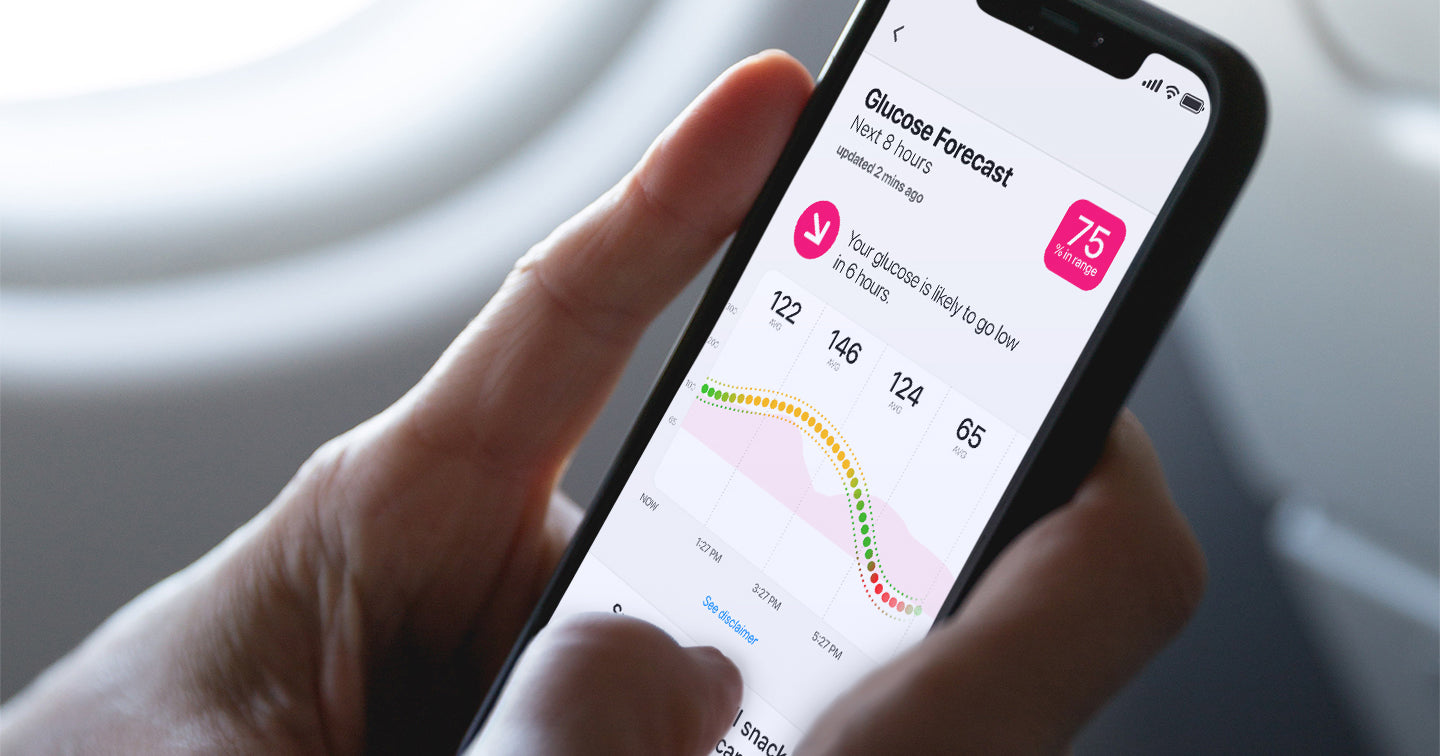The results of a recent study show that One Drop’s AI-powered glucose predictions are 91.9% accurate for hypoglycemia ("low") and 91.6% accurate for hyperglycemia ("high"), demonstrating greater accuracy than other notable providers.
NEW YORK, NY, February 25, 2020 — One Drop, a leader in digital therapeutics solutions for people living with diabetes and other chronic conditions, presented new results for continuous glucose monitor-based glucose predictions at The 13th International Conference on Advanced Technologies & Treatments for Diabetes in Madrid, Spain. These findings demonstrate increased accuracy of direct glucose, hypoglycemia, and hyperglycemia predictions across multiple time periods.
One Drop’s patent-pending machine learning model accurately predicts the probabilities that a user’s glucose will rise above 180 mg/dL or fall below 70 mg/dL. At 30 minutes, the predictions are 99.5% accurate, at 1 hour, 98.6% accurate, and at 4 hours, One Drop’s accuracy is 91.9%, which is higher than other published studies examining hypoglycemia prediction using continuous glucose monitor (CGM) data [1]. Sources for One Drop’s study included over 10 million hours of CGM data as well as self-care data from a sample of over 3,000 users.
“One Drop’s breadth of data includes glucose, food, exercise, sleep, and heart rate, which allows us to surpass the accuracy of IBM Watson Health at four-hour hypoglycemia predictions,” said One Drop VP of Data Science, Dan Goldner. “For the first time, we have the capability to alert people at risk of experiencing severely high or low blood sugar. Our AI-powered alerts have the potential to help our millions of users worldwide exercise proactive, preventative self-care.”
The study results also indicate an increased level of accuracy for point predictions of blood glucose concentration at 30 minutes and one hour, as compared to a previous study submitted to the Diabetes Technology Society [2]. The most substantial change occurred in the percentage of predictions with errors less than 30 mg/dL, which rose from 97.0% to 98.9% in 30-minute predictions and from 77.9% to 78.7% in one-hour predictions.
“As someone living with type 1 diabetes, I know how scary going low can be. It can literally be a matter of life or death,” said One Drop founder and CEO, Jeff Dachis. “Our increasingly accurate machine learning models take the fear and guesswork out of managing low blood sugar and prevent harmful overcorrections that often lead to hyperglycemia and increased A1C.”
One Drop provides users with AI-powered Predictive Insights and real-time advice on how to adjust their behavior (diet, physical activity, and more) for better outcomes without intervention from a health care provider. The machine learning models are trained on more than eight billion data points from three million users worldwide. Importantly, One Drop's models do not require getting to know an individual over time. Unlike other predictive tools, One Drop's models provide accurate predictions for one person based on the aggregate data of all people with similar health profiles. Within minutes of entering a single data point into the One Drop app, a user can receive their first prediction.
One Drop offers personalized programs for people living with diabetes, prediabetes, high blood pressure, high cholesterol, or any combination of these conditions. The company’s unique approach to inspiring positive behavior change and proactive self-care combines personal health coaching, connected devices, and life-saving predictions.
- Agarwal P. et al. Machine Learning to Predict Hypoglycemic Events from Continuous Glucose Monitoring Data. Diabetes 2019;68(Supplement 1).
- Wexler Y. Blood Glucose Prediction from Pooled Continuous Glucose Monitor Data. J Diabetes Sci Technol. In press.
